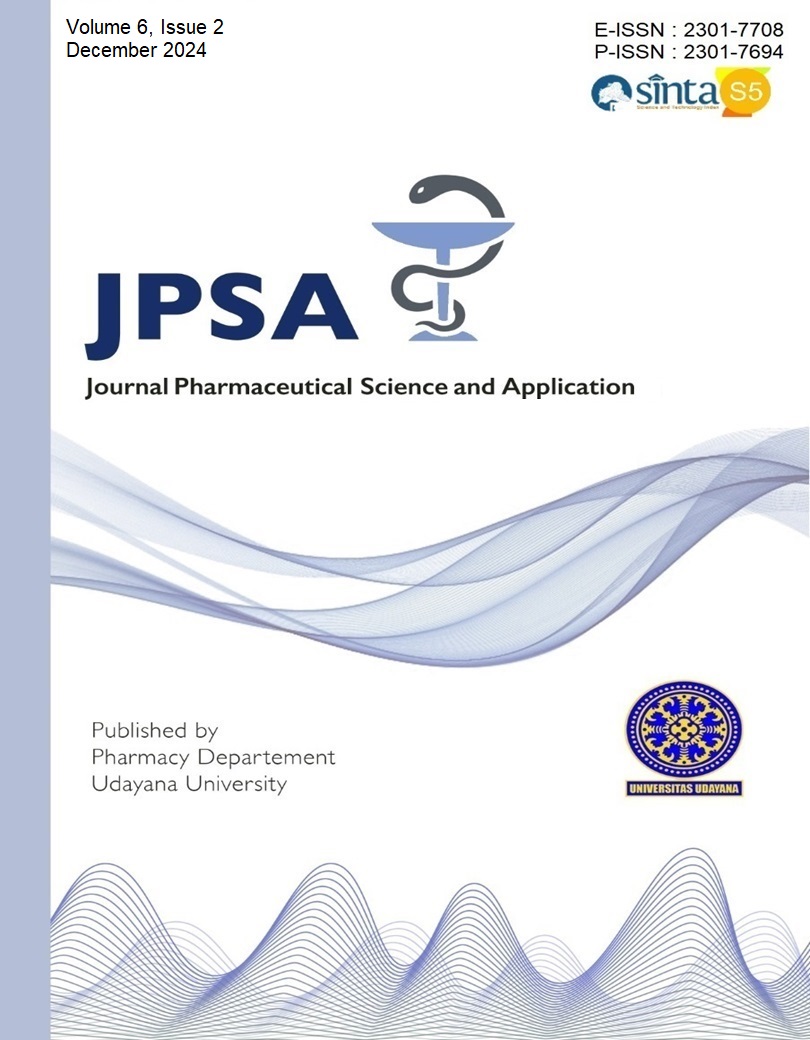ANTHOCYANIN ISOLATION METHOD OF RED DRAGON FRUIT (Hylocereus polyrhizus): A REVIEW
Abstract
Background: The body needs antioxidants to reduce the number of free radicals in the body. The anthocyanin compounds in red dragon fruit can be a source of antioxidants to counteract free radicals. Many types of solvents can be used to extract anthocyanins, such as water, methanol, or ethanol. The extracts produced from this process usually contain solvents that can reduce the anthocyanin content in the extract. Objective: Researchers believe that a literature review is needed to find out the factors that affect the isolation of anthocyanin compounds from dragon fruit skin, such as extraction methods, types of solvents, temperatures, and pH. Methods: The methods used in this study were obtained from Google, Google Cendekia, and Pubmed using keywords such as anthocyanin isolation and red dragon fruit. The article used was selected in the range of 10 years, from 2014 to 2024. The inclusion criteria in the search for literature are the articles that explain the anthocyanin isolation method of red dragon fruit and articles are available in Indonesian or English, while the exclusion criteria in this study are articles that are an article review. Results: The methods of maceration, Ultrasonic Assisted Extraction, Microwave Assisted Extraction, and Microwave Assisted Hydro Distillation can be used to isolate anthocyanin compounds using solvents such as citric acid, ethanol, and acetic acid. Conclusion: The ultrasonic assistance method is known to be able to attract the most anthocyanin compounds from red dragon fruit compared to other methods, which is 29,640 mg/5 g. The solvent with the acid environment is more suitable for extracting anthocyanin compounds. Prolonged extraction time can cause a decrease in anthocyanin content, which is associated with anthocyanin degradation by citric acid. The optimal time is 45 minutes with the UAE method.
Keywords: Anthocyanin; Isolation method; Red dragon fruit
Downloads

This work is licensed under a Creative Commons Attribution 4.0 International License.
Authors who publish with this journal agree to the following terms:
Authors retain copyright and grant the journal right of first publication with the work simultaneously licensed under a Creative Commons Attribution License that allows others to share the work with an acknowledgment of the work's authorship and initial publication in this journal.
Authors are able to enter into separate, additional contractual arrangements for the non-exclusive distribution of the journal's published version of the work (e.g., post it to an institutional repository or publish it in a book), with an acknowledgment of its initial publication in this journal.
Authors are permitted and encouraged to post their work online (e.g., in institutional repositories or on their website) prior to and during the submission process, as it can lead to productive exchanges, as well as earlier and greater citation of published work. (See The Effect of Open Access).

This work is licensed under a Creative Commons Attribution 4.0 International License.


 HOME
HOME
















